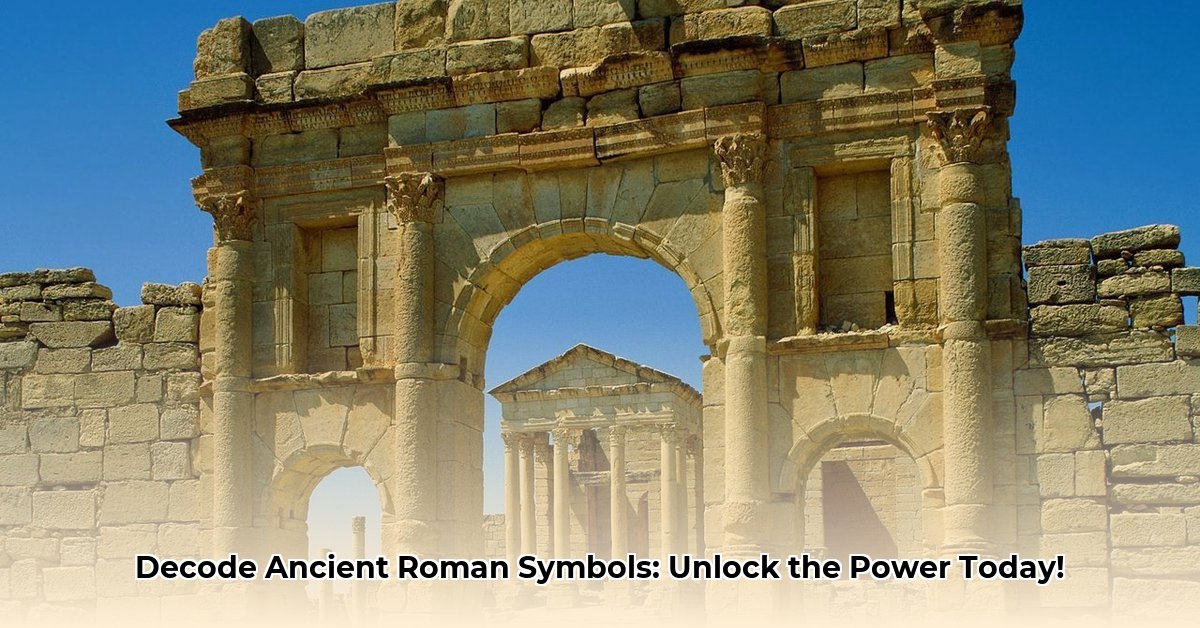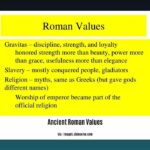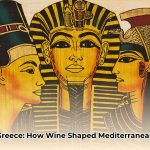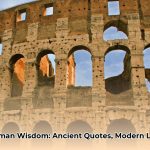Ever wondered what those majestic eagles on official seals truly signify, or why the letters “SPQR” frequently adorn ancient structures across Italy? Welcome to a fascinating journey into the profound visual language of ancient Rome! These symbols are far more than mere decorative elements; they are powerful vessels of meaning, carefully crafted to convey authority, instill fundamental values, and maintain societal order. From the fierce Aquila that soared at the head of Roman legions to the bold declaration of SPQR representing the very soul of Roman citizenry, and even the snake-entwined staff of Asclepius that persists as a medical emblem today, each iconic image is steeped in intricate historical significance. They illuminate what the Romans held most dear: strength, community, conquest, and the pursuit of well-being. Prepare to explore these iconic images, unravel their compelling narratives, and discover their enduring, often surprising, presence in our contemporary world.
Decoding Rome’s Enduring Emblems: A Glimpse into Antiquity
Ancient Roman symbols were sophisticated communication tools, designed to convey powerful messages about governance, societal values, and collective identity. Understanding these emblems offers a direct pathway into the heart of one of history’s most influential and enduring civilizations.
The Aquila: Rome’s Soaring Icon of Military Might
The Aquila, a golden eagle, was the supreme embodiment of Rome’s military strength, imperial ambition, and unwavering pride. More than just a standard, it was considered the very soul of a legion, intrinsically linked to Jupiter, the king of the gods and patron of Roman state. This divine association meant the Aquila symbolized not only tangible power but also divine favor, unwavering courage, and the legion’s very honor.
Key Insights into the Aquila:
- It represented the pinnacle of honor, bravery, and power for Roman legions, serving as their rallying point in battle.
- Its connection to Jupiter underscored Roman religious beliefs and the conviction of divine protection and destiny.
- The loss of an Aquila was deemed the ultimate dishonor, a profound spiritual wound, and a sign of catastrophic defeat for a legion, often leading to decades-long campaigns to recover it.
- Its profound influence extended far beyond the battlefield, permeating Roman culture and inspiring subsequent generations across empires.
Initially, early Roman legions used various animal symbols. However, in 102 BCE, Gai Gaius Marius, a transformative figure in Roman military history, standardized the Aquila as the sole, unified emblem for all legions. This pivotal reform fostered a singular, formidable identity among the troops, transforming disparate citizen militias into a highly disciplined, professional army. The aquilifer, or eagle-bearer, a highly respected veteran, bore the immense responsibility of protecting the Aquila, often at the ultimate cost of his own life. Can you imagine the resolve required for such a sacred duty, where the standard was more revered than life itself?
The catastrophic Battle of the Teutoburg Forest in 9 CE, where three legions were annihilated and their Aquilas captured by Germanic tribes, perfectly illustrates the symbol’s profound importance. The Romans spent decades, under figures like Germanicus, desperately seeking these lost standards, showcasing their immense symbolic value. Beyond its military significance, the Aquila was ubiquitous in Roman life, appearing on coins, statues, and even tombs, symbolizing an emperor’s soul ascending to the gods upon death. Today, its legacy endures, adopted by numerous governments, military branches, and organizations worldwide as a universal emblem of power, vision, and excellence.
SPQR: The Enduring Voice of the Roman People
The omnipresent letters SPQR, often seen etched into Roman ruins, monuments, and public works, stand for Senatus Populusque Romanus, meaning “The Senate and People of Rome.” This abbreviation was far more than a mere inscription; it was a potent political declaration. It asserted that ultimate authority in Rome rested with both the aristocratic Roman Senate and the broader body of Roman citizens, highlighting a perceived balance of power unique to the Republic. This emblem underscored the importance of collective identity, civic pride, and shared governance, serving as Rome’s enduring version of “We the People.” It was a constant reminder that the state acted on behalf of all its constituent parts, not just a single ruler.
From ancient military standards to modern municipal manholes in Rome, the SPQR symbol has consistently represented the city’s heritage and its historical commitment to a republican ideal, even through the Imperial period when emperors cleverly maintained its use to legitimize their rule. Its ubiquity served as a silent, powerful propaganda tool, reinforcing the foundational partnership between governance and citizenship.
The She-Wolf: Rome’s Mythical and Nurturing Origin
Rome’s profound origin story centers on Romulus and Remus, twin brothers abandoned as infants and miraculously nursed by a she-wolf, the Lupa Romana. This primal act of nurturing secured their survival, imbuing the wolf with deep, multifaceted symbolic significance for the nascent Roman civilization.
Key Insights into the She-Wolf Symbolism:
- It serves as the enduring visual representation of Rome’s legendary origin story, a testament to divine intervention and resilience.
- The symbol powerfully combines nurturing maternal care with fierce, predatory strength, mirroring the dual character of Roman identity.
- The precise historical origins of the iconic Capitoline Wolf bronze statue, central to this imagery, remain a fascinating subject of scholarly debate, contributing to its mystique.
- Its meaning has fluidly evolved across centuries, reflecting broader shifts in cultural values and interpretations of Roman legacy.
- The She-Wolf consistently remains a potent cultural icon in contemporary society, deeply embedded in Rome’s identity.
The she-wolf embodies a captivating duality: maternal care and protection, signifying Rome as a nurturing homeland and a source of life. This aspect was particularly evident in its ties to ancient fertility festivals. Yet, it simultaneously represents raw strength, ferocity, and unwavering determination, mirroring the Romans’ renowned military might and resilience in the face of adversity. This blend of nurturing instinct and fierce resolve powerfully encapsulates the complex character of Roman society. The bronze Capitoline Wolf statue, though revered as an ancient symbol, sparks ongoing debate among scholars regarding its true age, with some attributing the wolf itself to Etruscan artistry of the 5th century BCE and others dating it to the Middle Ages. Regardless of its precise origin, its association with the founding myth was undeniably solidified by the addition of the Romulus and Remus figures in the 15th century. This icon’s meaning continued to evolve through the Roman Republic and Empire, and even later, figures like Benito Mussolini controversially appropriated it—demonstrating its adaptable and enduring power as a symbol of the Italian nation. Today, it remains an undisputed emblem of Rome, featured prominently in tourism, sports, and cultural representations.
The Fasces: An Emblem of Unity and Authority
The Fasces, a bundle of wooden rods tightly bound together with a prominent axe head protruding, served as a potent and intimidating symbol of power and authority in ancient Rome. Its origins are deeply rooted in pre-Roman Etruscan civilization, from whom the Romans adopted many cultural and political practices. This emblem was typically carried by lictors, official attendants who served as bodyguards and executors for important Roman magistrates.
Key Aspects of the Fasces:
- Unity and Strength: The bundle of individual rods, weak on their own, became formidable when bound together, symbolizing strength through unity and collective power.
- Judicial Power: The axe within the bundle unequivocally symbolized the magistrate’s supreme power to enforce capital punishment (imperium), while the rods represented their authority to command and inflict lesser punishments like flogging.
- Etruscan Roots: The Romans inherited the Fasces from the Etruscans, who used a similar bundle as an insignia of royal authority, highlighting an important continuity in the representation of governance.
The Fasces was a powerful visual reminder of the magistrate’s right to impose order, administer justice, and exert state power. However, its potent symbolism was tragically co-opted and distorted in the 20th century. Its modern adoption by certain authoritarian regimes, most notably Benito Mussolini’s fascist movement in Italy (the very name “fascism” derives from fasces), has permanently associated the symbol with a controversial and oppressive legacy. Despite this, its ancient form still appears in classical contexts, such as on the U.S. House of Representatives’ mace, representing its original connotations of democratic authority and unity.
The Rod of Asclepius: An Ancient Symbol of Healing
Even if you don’t instantly recognize its name, you’ve undoubtedly seen the Rod of Asclepius: a simple staff with a single snake coiled elegantly around it. This ancient symbol, borrowed by the Romans from the Greeks, is now universally recognized as the primary representation of medicine, healing, and healthcare worldwide. It is directly linked to Asclepius, the Greek god of healing, who was also revered in Roman religion. Its pervasive presence in Roman iconography underscores their growing concern for public health and well-being.
Scholars often interpret the snake’s remarkable ability to shed its skin as a powerful metaphor for renewal, rejuvenation, and the cyclical process of healing and rebirth. This symbolism of continuous self-renewal, combined with the staff representing authority or guidance, made it a perfect emblem for the medical profession. Unlike the Caduceus (which has two snakes and wings and is often mistakenly used for medicine), the Rod of Asclepius has remained the true and globally accepted symbol for medical organizations, hospitals, and pharmacies, directly connecting modern healthcare to its ancient Mediterranean origins.
| Symbol | Primary Meaning | Modern Relevance |
|---|---|---|
| Aquila | Military strength, divine favor, imperial power | Widely used in military insignia, national emblems, and governmental seals globally, signifying authority, power, and prestige. |
| SPQR | Authority of the Roman state, civic pride, popular sovereignty | Appears on architectural elements in modern Rome, governmental buildings, and in popular culture to denote Roman heritage and civic pride, often referencing historical identity. |
| She-Wolf | Rome’s foundational myth, maternal care, resilience | An enduring symbol of Rome, frequently used in tourism, sports (e.g., AS Roma football club), and cultural representations associated with the city’s origins and enduring spirit. |
| Fasces | Authority, unity, judicial power | A controversial symbol due to its association with 20th-century fascism; however, it occasionally appears in classical architectural contexts (e.g., U.S. House of Representatives) as a design element, though less prominently in public display today. |
| Rod of Asclepius | Healing, medicine, rejuvenation | The universally recognized symbol of the medical profession and healthcare organizations worldwide, representing health and well-being, directly stemming from ancient Greek and Roman traditions. |
| Laurel Wreath | Victory, honor, achievement | Used in academic ceremonies (e.g., “poet laureate”), sports, and general symbolism for triumph, excellence, and peace, maintaining its connection to classical achievement. |
| Draco | Military standard, cavalry units, discipline | Less common today, but its serpentine form influences heraldry and fantasy, while its underlying meaning of military organization resonates indirectly in modern armed forces. |
| Colosseum | Grandeur, engineering, spectacle, imperial power | An iconic landmark of Rome, symbolizing its architectural prowess, historical spectacle, and enduring legacy, attracting millions of tourists annually. |
| Roman Numerals | Accounting, organization, enduring legacy | Still used for clock faces, numbering significant events (e.g., Super Bowl LVIII), outlines, and royal successions, signifying classical tradition and formal enumeration. |
| Knot of Hercules | Love, marriage, protection, unbreakable bond | Often referenced in discussions of ancient wedding customs; its symbolic meaning of an unbreakable bond is echoed in modern concepts of marriage and unity. |
The Laurel Wreath: A Crown of Victory and Honor
The revered laurel tree, its leaves ever green, was deeply significant in both ancient Greece and Rome. For Romans, the Laurel Wreath became the quintessential symbol of victory, honor, and achievement. It was often worn as a crown by emperors, triumphant generals, and victorious athletes who achieved great successes, particularly in the Roman Games. The wreath was made from branches of the bay laurel tree, which was deemed sacred to the Roman god Apollo, the patron of music, poetry, and prophecy.
In Roman mythology, the laurel tree was linked to the myth of Apollo and the nymph Daphne, who transformed into a laurel tree to escape his pursuit. In tribute, Apollo declared the laurel his sacred plant, forever associating it with triumph. The civic crown, a specific type of laurel wreath, was the second-highest military decoration a Roman citizen could receive, awarded to those who saved the life of a fellow citizen in battle – akin to the British Victoria Cross. This underscored its immense prestige. Beyond military and athletic prowess, it also honored poets and scholars, giving rise to the term “poet laureate.” Today, the laurel wreath remains a powerful emblem of excellence, seen in academic graduation ceremonies, sports iconography, and as a universal signifier of triumph and peace.
The Roman Draco: The Cavalry’s Serpent Standard
The Roman Draco was a distinctive military banner, the primary ensign of Roman cavalry units. Unlike the static Aquila of the legions, the draco was a dynamic, windsock-like standard carried on a pole, often with a bronze or silver dragon or serpent head at its apex. The term draco itself means “dragon” or “serpent” in Latin.
Its immediate practical purpose was to help organize and lead cavalry troops in battle, providing a visible rallying point amidst the chaos. The draco was almost certainly adopted from Rome’s interaction with barbarian tribes, particularly the Dacians (whose own draco was a formidable symbol) and Sarmatians, known for their powerful cavalry. When carried by the draconarius (dragon-bearer) on horseback, it would wave and “hiss” in the wind through a mechanism in its mouth, creating an intimidating spectacle for enemies and a source of morale for Roman troops. The draco symbolized the swift, striking power of the Roman cavalry and their capacity for disciplined movement. Its legacy now forms part of the broader symbolic imagery associated with military standards throughout history.
The Colosseum: A Monumental Symbol of Roman Grandeur
While a physical structure, the Colosseum, also known as the Flavian Amphitheatre, transcends its architectural form to become one of the most iconic and recognizable symbols of ancient Rome itself. Completed in 80 AD, this grand amphitheater embodies the very essence of Roman power, engineering prowess, and the society’s appetite for spectacle.
The Colosseum as a Symbol:
- Engineering Mastery: Its colossal scale and sophisticated design, including complex systems of ramps, trapdoors, and retractable awnings, symbolize the unparalleled engineering and architectural capabilities of the Roman Empire.
- Imperial Power & Wealth: Commissioned by the Flavian dynasty, its construction showcased the immense resources and organizational power of the emperors, providing a lavish distraction for the masses.
- Spectacle & Societal Control: It served as the primary venue for gladiatorial contests, animal hunts, and public executions, symbolizing Rome’s unique form of mass entertainment and its methods of controlling and engaging its populace.
- Brutality & Resilience: While magnificent, it also stands as a stark reminder of the brutality inherent in Roman society, yet its enduring ruins also symbolize resilience and the lasting impact of Roman civilization.
Today, the Colosseum attracts millions of visitors annually, acting as a powerful, tangible link to Rome’s glorious and complex past. Its image is synonymous with the Eternal City, representing the height of its imperial ambition and cultural influence.
Roman Numerals: The Orderly System of an Empire
Unlike the more abstract symbols of gods or military units, Roman Numerals represent a practical yet profound aspect of Roman civilization: their meticulous approach to order, administration, and record-keeping. This numeric system uses combinations of seven letters from the Latin alphabet (I, V, X, L, C, D, and M) to signify different values.
While less intuitive for complex calculations than the decimal system, Roman numerals were remarkably effective for the needs of a vast empire, facilitating trade, taxation, dating monuments, and military logistics. They reflect the Roman values of clarity, structure, and tradition. Even today, centuries after their widespread use, Roman numerals persist in various modern contexts: on clock faces, in outlining legal documents, numbering Super Bowls, indicating copyright dates for films, or denoting monarchs in a sequence (e.g., Elizabeth II). Their enduring presence highlights the profound and lasting influence of Roman culture and history on our modern society, serving as a subtle, constant reminder of their organizational genius.
The Knot of Hercules: A Bond of Love and Protection
The Knot of Hercules, also known simply as the “Herculean Knot” or the “Marriage Knot,” was a highly popular and symbolically rich emblem in ancient Rome, borrowed from Greek mythology. As its name suggests, it was associated with the mighty hero Hercules (the Roman equivalent of Heracles), renowned for his strength and indomitable spirit.
This intricately tied knot, often described as a very strong and complex binding, was most famously used as a protective charm in ancient Roman wedding ceremonies. It was typically tied around the bride’s waist as part of her wedding dress, meant to be untied only by the groom on their wedding night. This ritual symbolized the unbreakable bond of marriage, the fertility of the union, and offered protection against evil influences. Hercules, being a protector of married life, further reinforced its significance. Although eventually replaced by symbols like wedding bands, the Herculean Knot persisted as a powerful
- Unearth ancient rome achievements: Engineering feats & legal legacies, examined - August 13, 2025
- Unlock ancient rome army ranks: Power, impact & legion command - August 13, 2025
- Conquer Your Exam: Ancient Greece Quiz Ace It Now! - August 13, 2025















